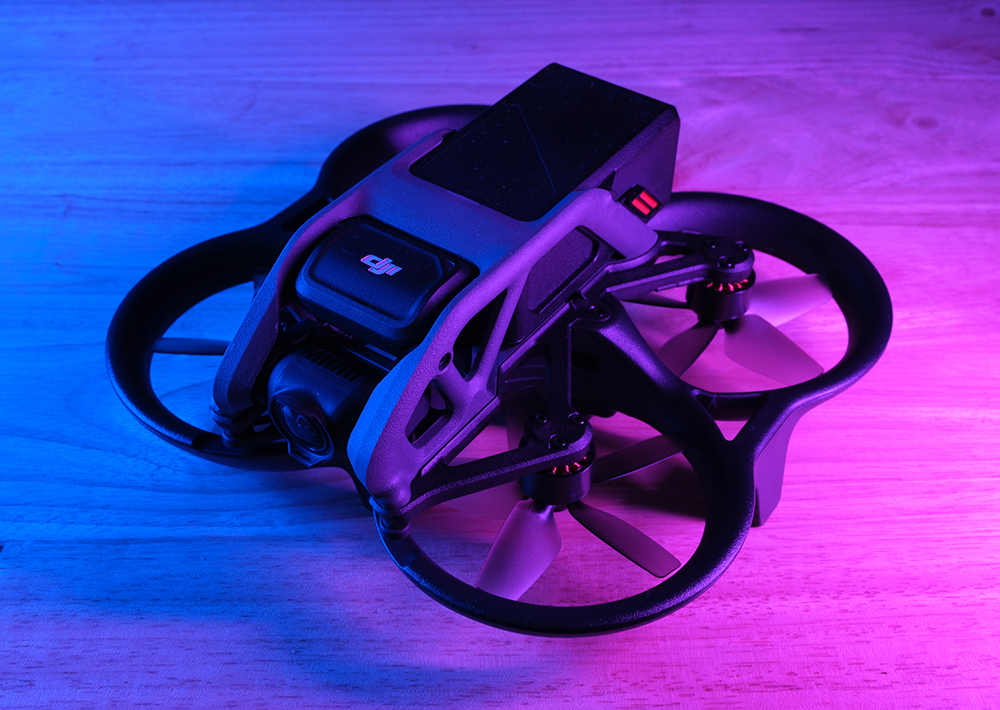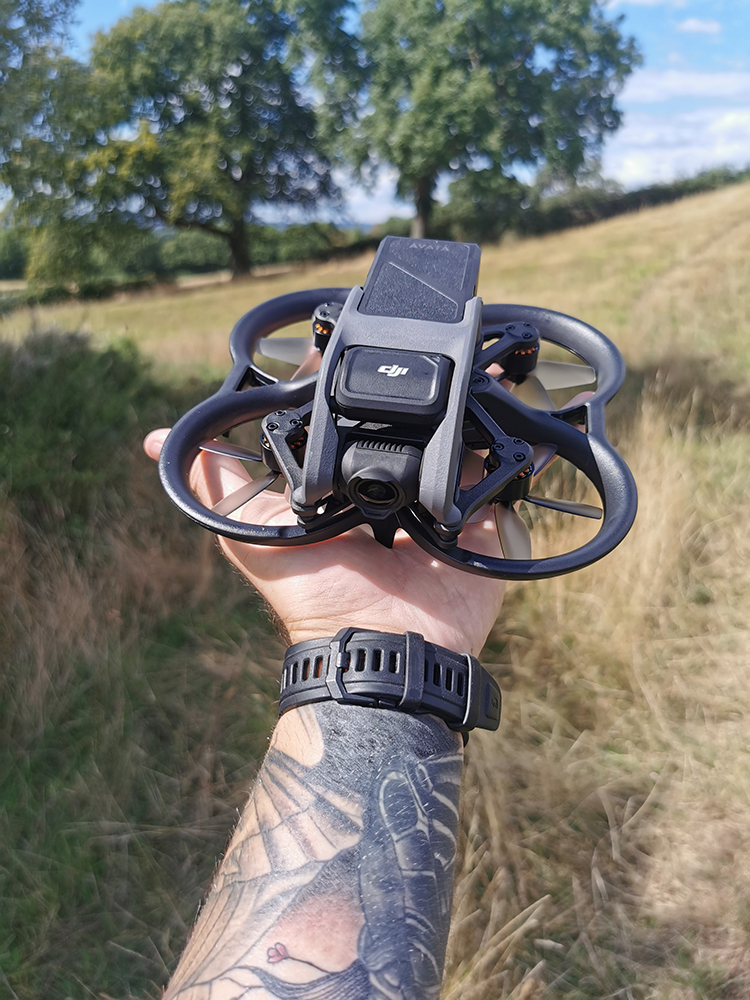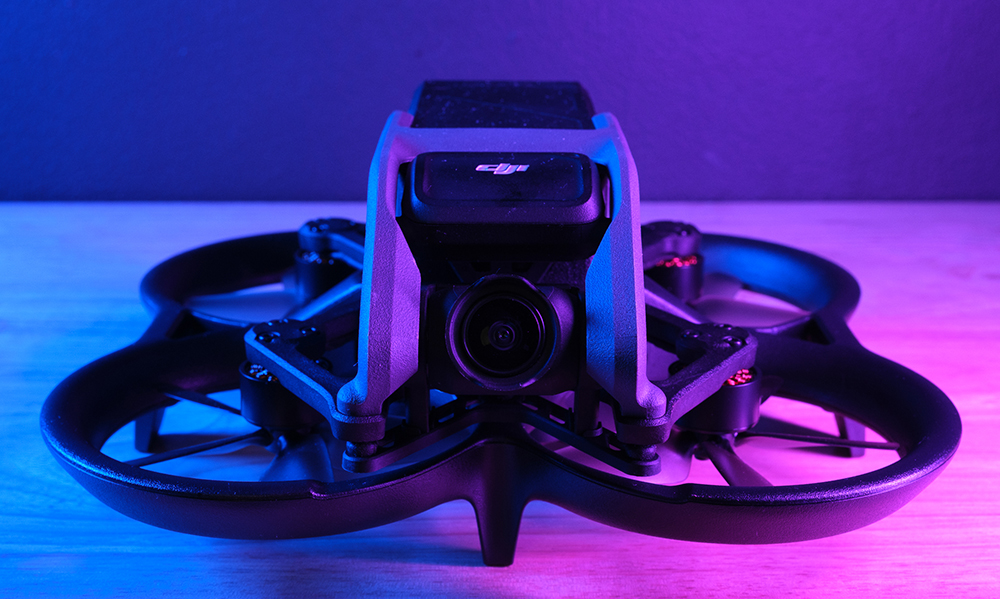5 Things I Love About The DJI Avata
Just over a year ago now, I was fortunate enough to take the original DJI FPV on a road trip around Wales to test it out and give my thoughts on it as a tool for content creation, which you can read about in this blog post >
I came away from that trip genuinely excited about DJI's foray into the world of FPV drones and absolutely loved the experience of creating content with the DJI FPV but ultimately I didn't end up purchasing one due to its form factor and the extra bulk it added to my already streamlined camera bag.
In all honesty, I hadn't thought about flying FPV again, that was until my social media started blowing up with DJI's latest release, the DJI Avata. After a quick call to Clifton Cameras and a raid on my piggy bank, I picked one up and so in this post I want to share the five things I love about the DJI Avata after having had it for a few weeks.

Top Specs
Before I jump in here's what you need to know about it.
The DJI Avata is a small, lightweight, cinewhoop design drone, which is equipped with a 1/1.7-inch CMOS sensor behind a camera with an f/2.8 aperture capable of shooting stunning 4K ultra-wide-angle footage.
Key Features
- Immersive flight experience
- 4K/60fps stabilised video
- Palm-sized and agile
- Built-in propeller guard
- HD low latency transmission
- 155° Super-Wide FOV
- 1/1.7-inch Sensor
- Up to 18 minutes of flight time
You can read more about the drone here, but let's get into the 5 things I love about it!
1) Form Factor
The first thing I noticed about the DJI Avata when it finally arrived in my hands, was just how small it is. Sitting comfortably in the palm of my hand and weighing in at only 410g it's a far cry from the size and bulk of the original DJI FPV.
This for me is a game changer. As a travelling content creator, I need to be conscious of the size and weight of my gear and so the vastly reduced body of the DJI Avata means I can throw it in my camera bag alongside my Mavic Air 2 to give me the option of creating content with a completely different dynamic, which is a fantastic option to have.
The aerodynamic ducted design of the Avata allows for an impressive flight time of 18 minutes, though in reality you get closer to 10-15 minutes depending on the conditions and mode you are flying in. Although this doesn't seem like a long time compared to say the new Mini 3 Pro, in the cinewhoop world a flight time of 10-15 minutes is almost unheard of!
2) Build Quality
The next thing I love about the DJI Avata is its build quality. Being a DJI product it's hardly surprising that it's been designed and built well. But with a drone of this size, you're never quite sure how well it's going to hold up if and when you crash – and crash you will!
In the cinewhoop world crashing is par for the course, an inevitable part of learning the art of FPV flying and it didn't take me long to fly mine full tilt into some tree branches as I misjudged a gap. In fact, I managed this on my first flight!
Check out Craig's full video review including his first flight over on his channel, or below:
Due to the nature and excitement of the Avata, this video does come with a mild language warning.
After some initial 'uh oh' thoughts on my way to retrieving the drone, I was pleasantly surprised to see that there was absolutely no damage to the Avata, on either the frame or the camera. Even if there was damage, the Avata has been designed in such a way that some of the major parts including the propellors, propellor guard and upper frame are all replaceable, which gives you great peace of mind to go out and fly with confidence.
Of course, you want to minimise the risk of loss and damage by flying responsibly, but you can be safe in the knowledge that the DJI Avata is a well-built piece of kit!
3) Camera
Again, it shouldn't be a surprise being a DJI product, that the camera quality is fantastic. However, I was really quite surprised at just how good it is on such a small drone.
The camera on the original DJI FPV wasn't that great so I'm glad to say that the DJI Avata is much improved.
The 1/1.7-inch CMOS sensor handles dynamic range relatively well, balancing out highlights and shadows whilst maintaining a good level of detail. Colours straight out of the gate look vibrant but you also have the option of shooting in D-Cinelike and grading later, meaning footage from the Avata can be seamlessly colour matched to other footage you may have shot on other drones or cameras as a part of a larger edit.
The DJI Avata can shoot up to 4k at 60fps and has Rocksteady and Horizonsteady stabilisation modes to ensure you end up with buttery smooth footage straight out of the camera. It's also compatible with third-party software such as Gyroflow if you require more fine-tuned stabilisation, proving the Avata is so much more than just a toy drone.

4) DJI Goggles 2
The Avata was released with an update on the goggles in the form of the DJI Goggles 2 (now DJI Goggles 3). Although not technically drone-specific, it's definitely something I love about this release.
The new Goggles 2 are vastly more compact and lightweight than the DJI FPV Goggles V2 and come with the antennas already attached, saving you time and faff in the field, whilst also reducing the risk of losing them.
It's not just the size and weight that are worth mentioning, the crystal clear 1080p resolution and super low latency make flying the Avata incredibly immersive and easier to spot obstacles in your path.
One feature I've yet to try, but that the Goggles 2 has, is head tracking, which allows you to control the gimbal with just the movement of your head. This new feature opens up the potential for incredibly dynamic camera movements and interesting shots.
5) Fun!
The final thing I love about the DJI Avata is just how fun it is to fly, I instantly remembered the buzz I felt when flying the original DJI FPV.
Using the included DJI Motion Controller is extremely intuitive and even new drone pilots can pick it up and be flying through gaps and around subjects with ease.
Normal and Sports modes allow beginner and intermediate pilots to experience the thrill of flying FPV with the safety of the GPS modes to keep the drone stable in the air. Meanwhile, advanced pilots can unlock the full potential of the Avata by switching it into Manual mode.
You do need the DJI FPV Controller to unlock manual mode and it's a steep learning curve but it's a challenge that I plan on undertaking over the coming months and I look forward to really seeing what this drone can do!
About Craig Pitts
Craig Pitts is a digital content creator with a passion for travel. He’s taken photos and shot videos across the globe with people and places being his main interests. You can follow his adventures on YouTube: Craig Pitts and Instagram @craigpittstv
Looking to buy the DJI Avata?
Ready to take the plunge? Pick yourself one of the following kits:
- DJI Avata Drone
- DJI Avata Pro-View Combo (includes DJI Goggles 2)
Read next
- The DJI Avata was Born To Fly
- DJI Mavic vs FPV for Content Creators
- Architecture Photography with the DJI Mini 3 Pro
Thank you!
Thanks for taking the time to read our blog, we really do hope they help you out and answer some of your questions. If you still have some unanswered, then please feel free to get in touch with our team of experts.
We have a LiveChat option on our website and we can, of course, be contacted via our email, we're also on the end of the phone too! Read more on how to contact us here >
Want to write for us?
If you've got experience with producing content on photo, video and/or optics products or techniques then we would love to hear from you. Contact our blog editor, Bea, with a sample of your work at [email protected].
- By Craig Pitts
- 30 Sep 2022




































































